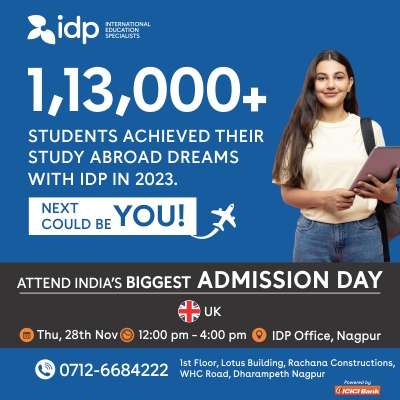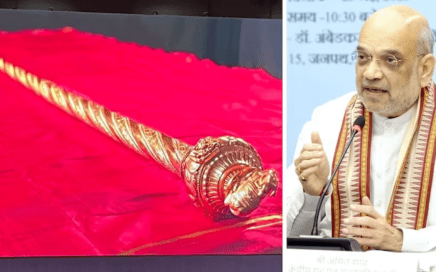
New Delhi: Union Home Minister Amit Shah on Wednesday held a press conference on the completion of Prime Minister Narendra Modi-led Government’s nine years.
Speaking at the occasion, Amit Shah said PM Modi will dedicate the new Parliament building to the country on May 28. “The new Parliament building has been constructed in record time and the PM will felicitate and honour 60,000 workers who built it. The new Parliament building shows PM Modi’s long-term vision,” said Amit Shah.
“A historical event is repeating itself. It is called Sengol in Tamil. It is historical with wealth. It is related to the tradition of the country. Sengol is a cultural heritage. This incident is related to August 14, 1947. This Sengol has played an important role in history. However, it did not come to our notice for so many years. Nehru accepted it from the Britishers on August 14, 1947,” said Shah at the conference.
The Union Home Minister said that Sengol holds huge importance in Indian culture, especially Tamilian culture. “Sengol has been important from the time of the Chola dynast. This will be kept in the new Parliament,” he said.
Meanwhile, 19 Opposition parties, including the Congress, the Aam Aadmi Party (AAP), Shiv Sena (UBT), the Trinamool Congress (TMC), and Janata Dal (United), announced in a joint statement they will boycott the inauguration of the new Parliament building on May 28.
The Opposition parties issued the joint statement that they would not attend the inauguration of the new Parliament building by Prime Minister Narendra Modi.
The History
The Sengol came into being after a chain of events that started with a simple question by Lord Mountbatten, the last Viceroy of British India, to Prime Minister Nehru. According to historical accounts and news reports, Mountbatten had asked the soon-to-be-PM what would mark the transfer of power when India attains Independence.
Prime Minister Nehru then turned to C Rajagopalachari, the country’s last Governor General, for advice. Rajagopalachari, commonly known as Rajaji, told Prime Minister Nehru about the Tamil tradition of the high priest handing over a sceptre to a new king when he comes to power. Rajaji, reports said, said this tradition was followed during the reign of the Cholas and suggested this could mark India’s freedom from the Raj. It then fell upon Rajaji to arrange a sceptre for the historic moment.
The making of Sengol:
Faced with the daunting task of arranging the sceptre that will mark India’s Independence, Rajaji contacted Thiruvaduthurai Atheenam, a prominent mutt in present-day Tamil Nadu. The then seer of the mutt accepted the responsibility. The Sengol was made by Vummidi Bangaru Chetty, a jeweller in then Madras. It is five feet in length and has a ‘nandi’ bull on top, symbolising justice.
According to reports, a senior priest of the mutt first handed over the sceptre to Mountbatten and then took it back. It was then sprinkled with gangajal, taken in a procession to Prime Minister Nehru and handed over to him, reportedly 15 minutes before midnight, when India attained Independence. A special song was composed and rendered as Prime Minister Nehru received the sceptre.
Sengol’s place In new Parliament:
The history and significance of the ‘Sengol’, the Home Minister said, was not known to many. Its installation in the new parliament, he said, was an attempt to link our cultural traditions with our modernity. The plan to install the sengol in the new parliament also reflects the far-sightedness of Prime Minister Modi, Shah said. The sengol is now at a museum in Allahabad from where it will now be brought to its new address – the parliament.
Responding to media queries, Shah stressed that the Sengol should not be linked to politics. “We want the administration to run by the rule of law and this will always remind us of that,” he said. The installation of the sceptre, now at a museum in Allahabad, in parliament puts the spotlight on a forgotten episode of history.

















